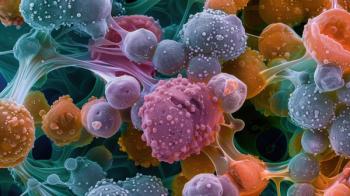
Distinguishing Primary Ovarian Insufficiency From Natural Menopause
Pharmacists explore estrogen replacement therapy for young women with POI, discussing safe options and alternatives for managing menopause symptoms.
This content was independently produced by Pharmacy Times in partnership with Bayer Healthcare.
At The Menopause Society (TMS) 2025 meeting in Orlando, Florida, Cynthia A. Stuenkel, MD, MSCP, clinical professor of medicine at the University of California, San Diego, discusses how management strategies differ between primary ovarian insufficiency (POI) and natural menopause. She explains that women with POI are typically much younger, requiring true estrogen replacement therapy at higher doses—often using a transdermal estradiol formulation with micronized progesterone for endometrial protection. In contrast, postmenopausal women have a broader range of treatment options, including estrogen therapy, selective serotonin reuptake inhibitors (SSRIs), serotonin-norepinephrine reuptake inhibitors (SNRIs), gabapentin, and newer neurokinin receptor antagonists such as fezolinetant and elinzanetant.
Pharmacy Times: What are the key differences in management strategies for primary ovarian insufficiency vs natural menopause, and why do they matter?
Cynthia A. Stuenkel, MD, MSCP: I think that's a really important question, because women with POI are often so young that we want to get some kind of estrogen replacement therapy going for them. If they still have their uterus, they need a combined therapy with a progesterone or progestogen to protect the lining of the uterus.
We know that this is truly estrogen replacement in this young group, and we know that young women’s own endogenous estradiol levels are much higher than what we target for postmenopausal women. So we give higher doses. We prefer a transdermal preparation so we can really deliver estradiol. I think a reasonable dose to start with is a 100-mcg dose, which is a lot higher than what we would usually use for an average postmenopausal woman.
We need to be mindful of endometrial protection. I like to use micronized progesterone, particularly in the woman with POI who has said, “If my cycles kick in, I’m sexually active, I’m in a relationship, and I’m happy to get pregnant.” We think that transdermal estradiol and micronized progesterone are safer should she conceive during the time she’s taking these than a synthetic progestin might be.
For the postmenopausal woman who has symptoms, she has a much broader spectrum of treatments she can choose from. She can choose estrogen therapy, which might be a good option if she also wants to have some bone protection, for example, and if she has symptoms, including vaginal symptoms, estrogen can be very helpful.
If she just wants to get rid of her symptoms or doesn’t want to take estrogen therapy, she can use a number of other options, such as SSRIs, SNRIs, or gabapentin. She might also consider one of the new neurokinin-3 or 1/3 receptor antagonists. Fezolinetant was approved about 2 years ago, and elinzanetant is anticipated to be approved very soon.
In that setting, we can also look at other health considerations such as cardiovascular health, any breast issues, and what the patient wants to do—what her desires are. I don’t think we feel compelled to provide hormone therapy to postmenopausal women of an average age of 50-51 [years].
Newsletter
Stay informed on drug updates, treatment guidelines, and pharmacy practice trends—subscribe to Pharmacy Times for weekly clinical insights.


















































































































































































































